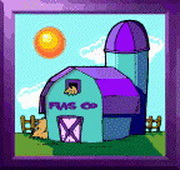Queso Fresco Cheese
Recipe
My very favorite "semi-soft" cheese to make is Queso Fresco. I consider Mozzarella a semi-soft cheese as well, and I find Queso Fresco can substitute for Mozzarella on many occasions. Queso Fresco means "Fresh Cheese". Sometimes, I find people confuse it with Queso Blanco ("white cheese") because of the "queso" in the name. Queso is Spanish for cheese, and these two cheeses really have nothing in common, except that they're both easy to make and they are both cheese.
I like my cheese to have lots of flavor, and this Queso Fresco supplies it. It is lightly pressed and ready to eat in just a few days. It is of Latin American origin, and has many variations. I make all my cheeses with goat milk, because I raise dairy goats. You could substitute cow milk, just raise the temperatures by 4°.
Correct temperatures are very important in cheese making, so be sure to use a good thermometer. I find that the easiest way to control the temperature of the curds is to use a homemade double boiler. I place my big cheese making pot into my big ol' canning kettle, which I have placed on the stove. I fill the canner with water up to the level of the milk in the cheese making pot. I place a thermometer in the water of the canner as well as the milk. This way I can tell the temperature of the water, which in turn, helps me control the temperature of the milk and curds.
Queso Fresco
Ingredients:
- 2 gallons goat milk (or cow milk) (I use raw, unpasteurized milk)
- 1/4 tsp. mesophilic DVI Culture "MM" or "MA" * or 4 oz. mesophilic culture (from a mother culture)
- 1/4 tsp. calf lipase powder (mild "piccante") (lipase is animal product- vegetarians may wish to omit this, but the cheese will not have as much flavor )
- 1/2 tsp. Liquid rennet (I use double strength vegetable rennet), dissolved in 1/4 C. water
- 2 T. kosher salt
*The DVI cultures I use are EZAL cultures from France purchased from The Dairy Connection.
Bring the milk to 86° (90° for cow milk) and add the mesophilic culture and lipase. Stir well and let set, to ripen, for 1 hour. Add the rennet and stir briskly for 15 seconds. Cover the pot and let the milk set for 45 minutes, or until you get a clean break. Hold the milk at a temperature of 86° (90° for cow milk) for the entire time.Cut the curds into 1/4" pieces with a stainless steel knife. This always seem to be the trickiest part of cheese making, but take your time, and don't worry if all the curds are cut to exactly 1/4". After you have cut the curds, do not stir them yet. Let them rest, undisturbed for 10 minutes (5 minutes for cow milk).
Now you can stir the curds and cut any that you had missed. If you stir the curds with a big wire whisk, this will cut any curds you missed automatically. Raise the temperature of the curds to 95° (99° for cow milk) over the next 20 minutes, stirring occasionally so the curds do not stick together. Let the curds settle for 5 minutes, undisturbed.
Drain the whey from the curds and save it for making Ricotta. Now, leave the curds in their cheese making pot that is placed inside the canner. Make sure the water in the canner is kept at 95° (99° for cow milk) and this will allow you to hold the curds at a temperature of 95° (99° for cow milk) . Hold the curds at 95° (99° for cow milk) for 10 minutes, stirring with your hand occasionally so that the curds don't stick together.
After you have held the curds for at 95° (99° for cow milk) for 10 minutes, stir in the salt. At this point in the cheese making you could spice up your cheese by adding some herbs, such as chives, or even minced jalapena peppers, if you'd like. (To be honest, I never add herbs, I think this cheese is great just plain.)
Line a cheese mold with cheesecloth and add the curds. Press the cheese at 10 lb. for 10 minutes, remove it from the press, flip it over and place it back in the press. Continue pressing at 20 pounds for 1 hours and then raise the weight to 35 pounds for 6 hours.
After it has pressed for six hours, remove the cheese from the mold and let it air dry on a rack overnight. The next day, wrap it (I put it in a ziploc bag), and refrigerate the cheese for several days before testing. Really, believe me on this, it's worth the wait. If you taste the cheese too soon, it may seem "rubbery". Also, the flavor develops during the short "aging" process. This cheese will keep for several weeks in the fridge. From experience I have learned that this cheese does not freeze well.
